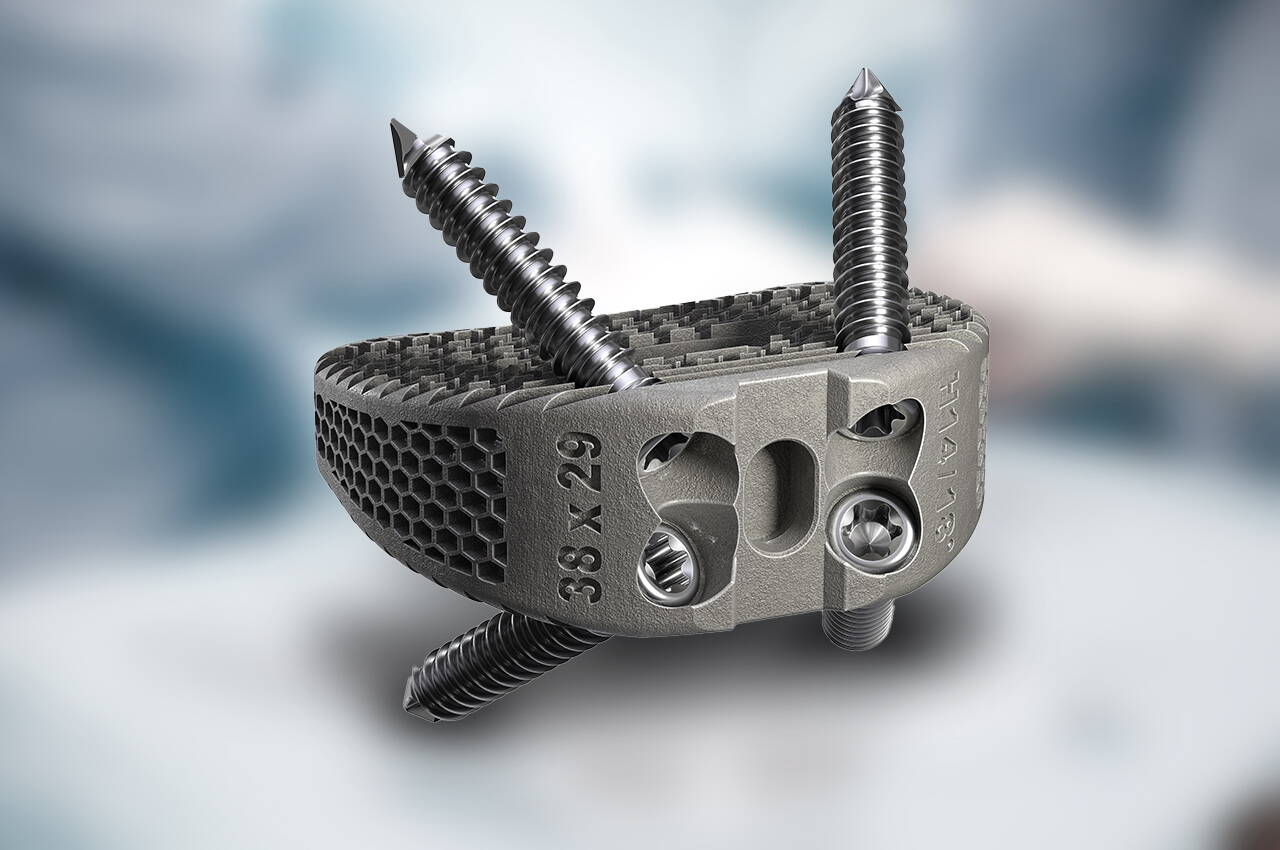Hygro-L ALIF (stand alone)
porous titanium cage with unique capillary effect from Switzerland
Fusion technology
The Hygro-Cages consist of an additively manufactured honeycomb structure made of titanium with vertically and horizontally connected pores. This structure has proven its suitability for spinal fusion in a clinical PMCF study1 and it can be concluded that cell transfusion into the cage structure is supported. The capillary effect due to the specifically designed pore dimensions2 directs bone growth to the outer and inner surfaces. The rough microstructure of the titanium surfaces may contribute to natural BMP production3 and may enable faster fusion.4
Primary stability
High primary stability is achieved by cranial and caudal interlocking.
Rounded corners
Rounded corners with a smooth surface ensure safe implantation while the rough surface of the contact area to the endplates ensures high primary stability.
Clear assessment of the surgical result
Titanium interferes less with MRI compared to metal (e.g. stainless steel or tantalum). Together with its high porosity (80%), artefact formation is significantly reduced, resulting in clear medical imaging.
Various implant sizes available
Thanks to the extensive portfolio, the Hygro-Cages are suitable for many different indications. This enables the best possible coverage of the intervertebral disc space.
Well thought-out instruments
The aim of the instruments and set design is simple, fast and safe surgery. The instruments include shavers, curettes and rongeurs and are anatomically shaped for easier implantation.
Safety through experience
Hygro-Cages have already been used in over 10,000 operations in Switzerland, Germany, Austria and the UK.
*Double Cage technique for revision surgery Two cages for an optimal fit. Two smaller cages are implanted for ALIF surgery above L5 to prevent vascular injuries.
1 Hygro-Cages PMCF-Study White Paper_2019
2 Pattanayak D. K. et al. . Bioactive Ti metal analogous to human cancellous bone: Fabrication by selective laser melting and chemical treatments. Acta biomater. 7, 1398-406 (2011).
3 Gittens RA, Olivares-Navarrete R et al. Implant Osseointegration and the Role of Microroughness and Nanostructures: Lessons for Spine Implants Acta Biomater. 10(8): 3363-71 (2014)
4 Olivares-Navarrete R , Gittens RA , Schneider JM , et al. Osteoblasts exhibit a more differentiated phenotype and increased bone morpho- genetic protein production on titanium alloy substrates than on poly-ether-ether- ketone. Spine J 2012 ; 12 : 265 - 72.
| Hygro-L® ALIF | ||
|---|---|---|
| Width | 32 mm | 38 mm |
| Length | 24.5 mm | 29 mm |
All cages in 6° and 9° lordosis angle
All cages are available in 8-18 mm height in 2 mm increments


